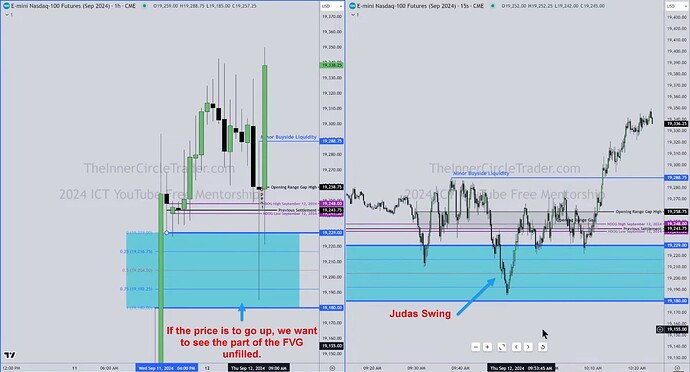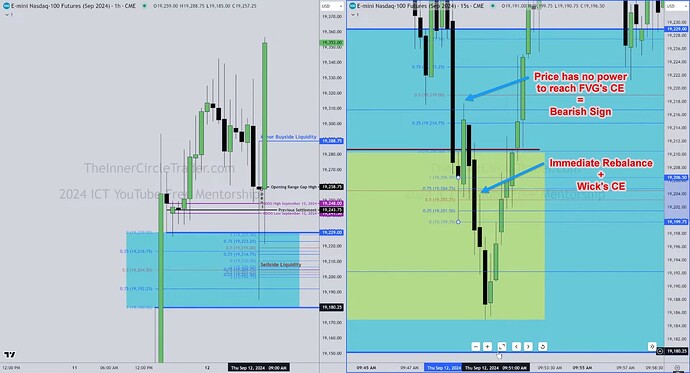Notes
- In addition to the liquidity pools identified before the start of the trading session, the following three significant liquidity pools are added at the beginning of the PM session:
- High and low of the AM session (9:30 a.m. to 11:30 a.m.)
- High and low of the lunch hour (11:30 a.m. to 1:30 p.m.).
- High and low of the current day.
- Michael says there are four macros during the last trading hour, but he does not specify this fact.
- PM sessions are always easier to trade than AM sessions.
- Inefficiencies (FVG, BPR,…) should not be fully filled to confirm the market’s intended direction, as a complete overlap could indicate a reversal.
- During intraday trading, Michael monitors the following time frames:
- Daily chart.
- 4-hour chart.
- 1-hour chart.
- 15-minute chart.
- 5-minute chart…
- 4-minute chart.
- 3-minute chart.
- 2-minute chart.
- 1-minute chart.
- 45-second chart.
- 30-second chart.
- 15-second chart.
- 5-second chart.
- Trading during the AM session preceded by a large range day is tricky.
- Successful trading isn’t about jumping into every opportunity but about waiting for the market to present favorable conditions.
- Michael again encourages journaling trades and keeping track of market behaviors to improve long-term understanding.
- He advises traders to avoid engaging in high-risk trades during periods of uncertainty or when market conditions are not ideal.
- The richest traders are those who know when to refrain from trading rather than constantly pushing for action.
- Waiting for the market to show its hand before making trades is essential, especially after a large range day.
NQ - Judas Swing
NQ - Immediate Rebalance And Wick’s Consequent Encroachment
NQ - Bullish Order Block And Change In The State Of Delivery
Next lesson: 2024 ICT Mentorship - How To Trade ICT FVGs Correctly: September 16
Previous lesson: 2024 ICT Mentorship: September 11


